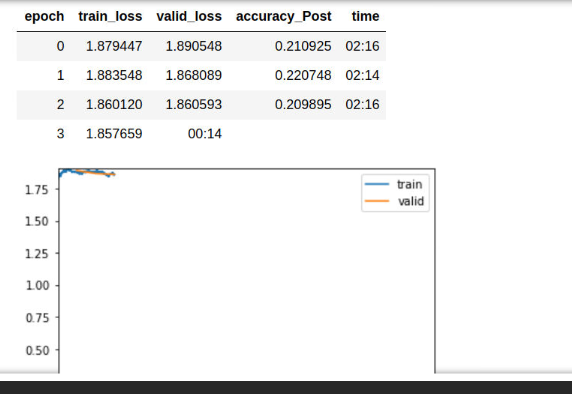Thank you for share! What do you think fo waiting until it is merged to Torchvision, so it is easy to maintain?
Yes, my function is just a wrapper around that, so as you discovered it is related to randomness in training.
It contains all types of tumours, no?
My tumour dataset at Deep-Tumour-Spheroid was obtained from pictures obtained from microscopes in the Universesity of Zaragoza (Spain).
Thank you for taking your time looking at the library!
Yes, actually is a little bit different from your Deep-Tumor-Spheroid. Rather than micorcopy images from cells in suspension (spheroids) they are cells from human tumor biopsies, fixed and stained with Hematoxylin and Eosin. In this specific dataset, 5 different cell nuclei populations are segmented.
It’s quite a hard dataset, the authors of the paper report around 65% pixel accuracy so a lot of room to improve.
Sounds interesting! Thank you for sharing!
UPDATE:
I haven´t got a RTX 3080 yet, no stock…
It is very hard to get one.
@rsomani95 @muellerzr I will update here when I bought the graphic and can continue with the library.
Hi, have anyone experiment with running semantic segmentation prediction with various input size and get the correct mask for it.
I trained deeplab3 model with fixed size of (75, 1075)
But i want to use it to predict a lot of different size inputs,
For example: (250, 4500), (350, 4500), …
The prediction results alway have size (75,1075).
I know in fastaiv1 we can do
learn.data.single_ds.tfmargs['size'] = None
Ref: Segmentation mask prediction on different input image sizes
But i dont know a good way to deal with this in fastaiv2.
Thanks
I’m trying to get my hands on a 3090 myself. If I get that, there’s no waiting 
But yes, what you said makes sense, though I think it’ll be a while by the time (and if) they get around to doing that.
I would post this in a separate thread as it is off topic 
Got one, but it isn’t compatible with fastai or the latest stable pytorch release either 
More on that here: RTX 3090 / Torch 1.8 (Nightly) Compatibility
Hi, I try to add the danet to Semtorch(https://github.com/junfu1115/DANet/blob/56a612ec1e/encoding/models/sseg/danet.py), but as the following picture show that the author combine three outputs together
. I try to using only x[0],but every time I try to use the lr_find I get different result and when I train the model, I always get the wrong result. Have you ever considered add the danet into the Semtorch or any suggestions?Should I change the loss function?appreciate for the answers!
Sorry for the late reply @bowenroom. I have hard a hard week.
I have considered adding new architectures. I can help you get this one added.
Can I close the issue and keep throught here the discussion? I need to take a look at this architecture first!
My package makes use of other archs that returns a tuple or list too.
great appreciate for the answer, appreciate for all the effort you have done, thanks 
I am curious if you labeled the data yourself. I am curently looking a different tools to do manual labeling (ideally with the model on the loop) and for semantic segmentation is a mess, they are super slow or they generate messy jsons.
I tried:
- Label Studio, it is utterly slow and the interface glitches a lot.
- Currently using CVAT, but I would really like a non-brush tool, to paint the pixels instead of the box.
Do you recommend a particular encoding for this task? COCO, etc…?
Does this include 3D U-Net by any chance or you have that in the roadmap? While I am impressed with the illustration on brain tumour segmentation (i guess using 2D model) , it’s pretty much of limited use in medical image processing of CT and MRI. They need 3D models to include the context between slices.
Woo, nice work!
Any news about instance segmentation support?
So is that correct, SemTorch doesn’t actually provide instance segmentation at this point?
I think it’s misleading to put an image of instance segmentation in the github SemTorch page if it doesn’t support it. Just saying. ![]()
